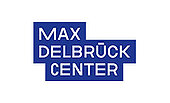Activity-enhanced variant of hyeractive Sleeping Beauty transposase SB100X
Keywords
Sleeping Beauty, transposase, transposon, SB100X, Q124C, gene editing, transpositional activity, overproduction, gene therapy
Invention Novelty
In the last decade, gene therapies have experienced a breakthrough, with most strategies initially focusing on viral vector systems, even though these are quite difficult and expensive to manufacture on a larger scale. Accordingly, given their low cytotoxicity, immunogenicity, and mutagenicity, nonviral delivery systems have caught up, although they, too, face challenges in terms of efficacy, specificity, and safety. One of the best-characterized nonviral delivery systems is the Sleeping Beauty (SB) system of the Tc1/mariner family, which is composed of (i) a mobile genetic element (--> transposon) flanked by two terminal inverted repeats (TIRs) and (ii) the SB transposase. After reconstruction from various fish species, the ancient SB system was able to efficiently mediate gene transfer in a variety of vertebrates (incl. humans), and was successively developed (--> vector, TIR, and transposase) into a powerful tool for genome engineering (incl. gene therapy), with first examples now in the clinic. The present invention provides an improved SB transposase with significantly enhanced gene transfer efficacy and reduced overproduction inhibition.
Value Proposition
The SB systems is one, if not the, most thoroughly studied transposon systems, which can be and has been exploited for a wide spectrum of gene editing applications, incl. generation of transgenic cell lines, reprogramming of induced pluripotent stem cell, phenotype-driven screens in tumor biology, gene transfer in animals, as well as gene therapy. The latter gene therapeutic use is on one hand facilitated by the system`s close-to-random integration profile, but on the other hand impeded by a still improvable gene transfer efficacy. The invention provides (compared to the already hyperactive SB transposase SB100X) a further improved variant, with increased transpositional activity, facilitating an even broader utility of the SB system.
Technology Description
SB transposase is composed of an N-terminal DNA binding domain (aa1-110) and a C-terminal catalytic domain (aa114-340), which are connected via a flexible linker that also harbors the nuclear localization signal (aa97-123). Since the discovery of the SB system, several mutations have been identified which improve the enzyme’s properties. These efforts culminated in the (until now) most active SB variant (--> SB100X), while other mutations led to e.g., alterations of the enzyme’s stability, solubility, or integration profile (--> K248R). Most mariner transposases carry a WVPHEL motif (aa119-124), which has been shown to play an important role in regulating the transposase activity. SB and some other transposases, in contrast, contain an KKPLL motif instead, indicating that activity modulating mutations that work for WVPHEL-type transposases do not work for SB transposases. Surprisingly, the inventors found that substituting the glutamine residue right next to the KKPLL motif with cysteine (Q124C) facilitates (compared to SB100X) a robust about two-fold increase in transpositional activity. Importantly, the corresponding SB100X variant also shows resistance to the known overproduction inhibition, and the mutation is fully compatible with other clinically relevant SB transposase variants, including the recently identified safety improved SB100X mutant K248R (see TO 03-00541 and Figure).
Commercial Opportunity
The SB system and the improved SB transposase are available for in-licensing.
Development Status
Activities and properties of the SB100X mutant Q124C have been extensively studied in vitro in human cells and mouse primary hematopoietic stem cells (HSCs) and validated in the context of other clinically relevant SB100X mutants (like K248R).
Patent Situation
Priority-establishing EP22200543.1 has been filed in October 2022.
Further Reading
Sandoval-Villegas et al., 2021, Int. J. Mol. Sci. 22: 5084; and Miskey et al., 2022, Nucl. Acids Res. 50: 2807.





